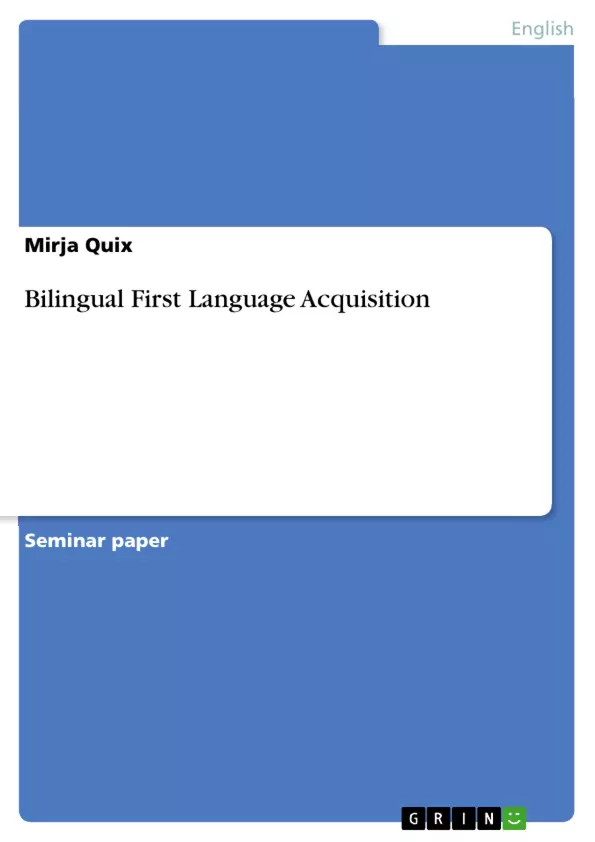The following paper focuses on bilingual first language acquisition (BFLA).
While there is a quantity of fields researched in BFLA, the arguably prior question concerns the development of bilingual learners in comparison to monolingual learners regarding the developmental path and [the] timecourse of language development. This question is based on the assumption, that the acquisition of two languages might challenge a language learner, thereby impeding their process in comparison to monolingual child- learners.
To illuminate the different aspects of bilingualism and BFLA, this paper is going to have a look at morphosyntax, the lexicon and phonology, as well as code- mixing andcommunicative competence.
Table of Contents
1. Introduction
2. Bi & Multiculturalism
2.1 Balanced Bilingualism
3. Types of simultaneous Acquisition:
Categories of Early Childhood Bilingualism
4. Linguistics
4.1 Morphosyntax
4.2 The Lexicon
4.3 Phonology
5. Codeswitching & Codemixing in bilingual children
6. Communicative Competence
7. Conclusion
8. References
- Quote paper
- Mirja Quix (Author), 2016, Bilingual First Language Acquisition, Munich, GRIN Verlag, https://www.grin.com/document/428699



